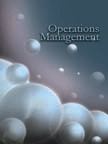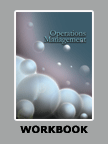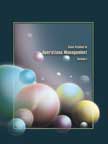The Making of Airbus A380: A Triumph of Science and Engineering
|
|
ICMR HOME | Case Studies Collection
Case Details:
Case Code : OPER056
Case Length : 13 Pages
Period : 1999-2006
Organization : Airbus, Boeing
Pub Date : 2006
Teaching Note :Not Available
Countries : France, Germany, Spain
Industry : Aircraft Manufacturing
To download The Making of Airbus A380: A Triumph of Science and Engineering case study
(Case Code: OPER056) click on the button below, and select the case from the list of available cases:

Price:
For delivery in electronic format: Rs. 300;
For delivery through courier (within India): Rs. 300 +Shipping & Handling Charges extra
» Operations Case Studies
» Case Studies Collection
» ICMR HOME
» View Detailed Pricing Info
» How To Order This Case
» Business Case Studies
» Case Studies by Area
» Case Studies by Industry
» Case Studies by Company 
Please note:
This case study was compiled from published sources, and is intended to be used as a basis for class discussion. It is not intended to illustrate either effective or ineffective handling of a management situation. Nor is it a primary information source.
Chat with us

Please leave your feedback

|
|




<< Previous
Excerpts
Manufacturing A380
|
The A380 had 49% more floor space than Boeing's 747, leaving additional room for
features such as on-board shops, bars, casinos, or even nurseries (Refer Exhibit
III for a comparison between the A380 and the B747 and Exhibit IV for pictorial
differences between the A380 and the B747).
The A380, like other aircraft, was manufactured in three class configurations -
Economy, Business, and First Class. The standard layout of the A380-800
comprised 22 first class and 334 economy class seats on the main deck, and 96
business class, and 103 economy class seats on the upper deck. The first-class
seat could be opened out into a bed...
|

|
The Materials Used
About 25% of the A380 was made of composite materials. The advantage with
composites was that they were robust, lightweight, and could withstand heat
and cold more than a metal. Reduction in weight was one of the greatest
advantages of composites, leading to less fuel burn, fewer emissions, and
lower operating costs. The two categories of constituent materials of
composites were matrix and reinforcement. The matrix material surrounded and
supported the reinforcement materials by maintaining their relative
positions. The reinforcements were to impart special mechanical and
electrical properties to enhance the matrix properties...
|
|
The Technologies Used
Airbus used many novel techniques and technologies in developing the A380. A
few of the prominent techniques included Modular Avionics, Network Systems
Servers, Power-by-wire flight controls, and new hydraulic systems.
Integrated Modular Avionics (IMA): The A380 had an avionics architecture
called IMA which was normally used in advanced military aircrafts. It had
dedicated software housed in onboard processor modules and servers. This
architecture reduced the number of parts and provided increased flexibility
without customized avionics being resorted to... |
Excerpts Contd...>>
|
|










